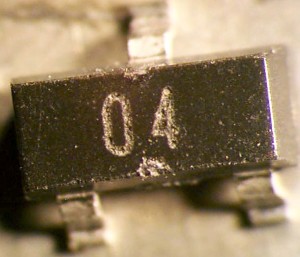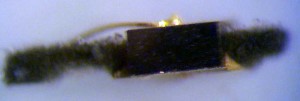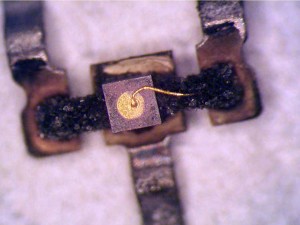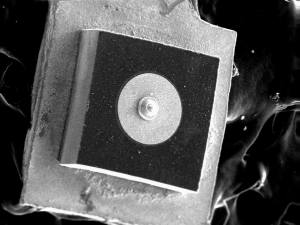Varactor Diode GVD30601-001
Gideon Analytical Laboratories received several GVD30601-001 super hyperabrupt junction tuning varactor diodes with a latent failure mechanism over time. A varactor diode is a P-N junction diode that changes its capacitance and the series resistance as the bias applied to the diode is varied. Hyperabrupt tuning varactor diodes offer a large change in junction capacitance over a small tuning voltage range. Varactors are operated in a reverse-bias state, like a Zener diode. Thus, no current flows, but since the thickness of the depletion zone varies with the applied bias voltage, the capacitance of the diode can be made to vary. The depletion region thickness is proportional to the square root of the applied voltage; capacitance is inversely proportional to the depletion region thickness. Thus, the capacitance is inversely proportional to the square root of the applied voltage. The goal was to find the cause if the GVD30601-001 varactor failures.
All problematic varactors were tested and compared to several reliable varactors supplied to Gideon Analytical Laboratories. Analysis revealed all failures had a reverse breakdown voltage of 6-9 volts lower than the new devices. All devices were decapsulated. As can be seen in the picture below, the failed decapsulated varactor has a carbon bridge linking the cathode to the two leads. This was the worst voltage failure.
Carbonization occurs when excessive current burns the epoxy in an anaerobic environment. The spacing of the lead frame was intact and the spacing and is such that no shorting between the leads was the cause. The carbonization was tenaciously held by the die attach metallurgy which is silver.
The carbon bridge was broken off and the die was retested to determine whether the lower BV (breakdown voltage) is the die or bridge. The picture below shows the carbon bridge half way up the die thickness. The die showed 38V after bridge removal. Nothing was wrong with the die. This latent silver migration problem is exacerbated by temperature and moisture. For comparison, the picture below shows a good varactor with anode lead attached.
After EDS analysis was conducted, Gideon Analytical Laboratories concluded that the root cause of the bridge was silver migration. This set up a small electrical path, and gradually over time, diminishes the effectiveness of the diode. This eventually gave way to a stronger electrical current which carbonized the epoxy into what is shown in the picture.
Gideon Analytical Laboratories has helped hundreds of electronics companies over the past two decades. Time and time again, Gideon Analytical Laboratories has provided companies with relevant, accurate, and invaluable information that identifies exactly how and why an electrical component is failing.

New GVD30601 Varactor

New varactor with no bridging

Carbon bridging across cathode

Varactor with carbon bridging across cathode to anode.

Varactor Micrograph